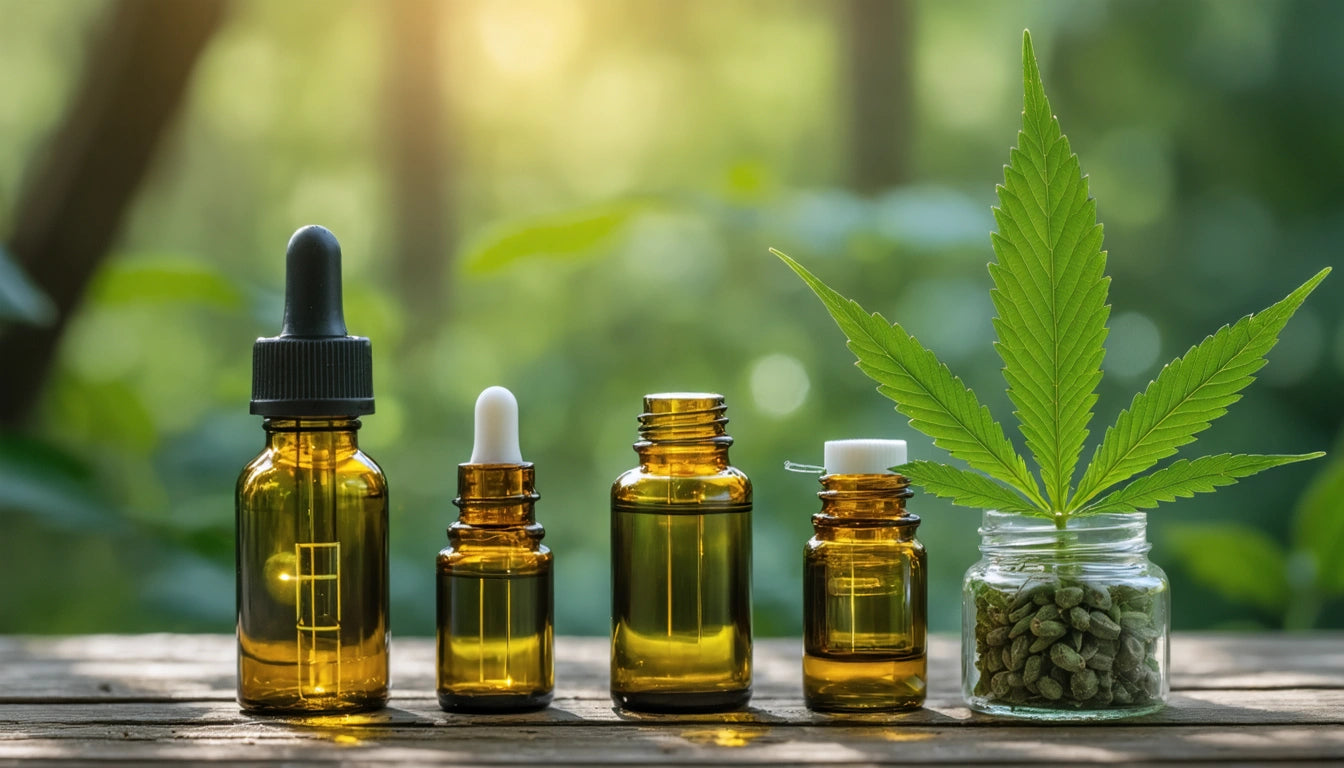Table of Contents
Understanding Limonene in Cannabis: Effects and Comparisons with Myrcene
Cannabis contains hundreds of compounds that contribute to its effects, aroma, and flavor profile. Among these, terpenes play a crucial role in defining the unique characteristics of different strains. Limonene, one of the most prevalent terpenes in cannabis, deserves special attention for its distinctive citrus aroma and potential therapeutic properties.
What is Limonene in Cannabis?
Limonene is a monoterpene found abundantly in citrus fruit peels, particularly lemons and oranges. In cannabis, it's responsible for the bright, citrusy aroma present in many popular strains. As explained in this comprehensive guide on cannabis terpenes, these aromatic compounds do much more than just provide pleasant scents.
This terpene is easily recognized by its:
- Vibrant citrus aroma
- Quick absorption into the bloodstream
- Presence in the rinds of citrus fruits
- Relatively high concentration in certain cannabis strains
Unlike cannabinoids such as THC and CBD, limonene doesn't bind directly to cannabinoid receptors. Instead, it interacts with the body through different pathways, potentially influencing how other cannabis compounds affect you.
Limonene Effects and Potential Benefits
What Does Limonene Do in Weed?
Understanding what limonene does in weed is essential for consumers seeking specific effects from their cannabis experience. This terpene is believed to contribute to the entourage effect, where multiple cannabis compounds work together to enhance or modify each other's effects.
Research suggests limonene may offer several potential benefits:
- Mood elevation and stress reduction
- Anti-inflammatory properties
- Potential antioxidant effects
- Possible immune system support
Many users report that strains high in limonene provide an uplifting, energetic experience, making them popular choices for daytime use. As this article on cannabis terminology explains, the effects of specific terpenes are becoming increasingly important in how consumers select their products.
Limonene vs Myrcene: Key Differences
When comparing limonene vs myrcene, several important distinctions emerge. Both are common cannabis terpenes, but they offer contrasting effects and aromas:
Aroma Profile
Limonene presents a bright, citrusy scent reminiscent of lemons and oranges. Myrcene, by contrast, offers an earthy, musky aroma with hints of cloves and herbs. This fundamental difference helps consumers identify which terpene might be dominant in a particular strain.
Effects on Experience
While limonene tends to provide energizing, uplifting effects, myrcene is often associated with relaxation and sedation. According to research on cannabis plant basics, myrcene is often found in indica-dominant strains, while limonene appears frequently in sativa-leaning varieties.
Potential Therapeutic Applications
The therapeutic potential of these terpenes also differs significantly:
- Limonene: Often associated with stress relief, mood enhancement, and anti-inflammatory properties
- Myrcene: Frequently linked to pain relief, muscle relaxation, and sedative effects
Understanding these differences helps consumers select products aligned with their desired experience and potential therapeutic goals.
Popular Cannabis Strains High in Limonene
Several cannabis strains are known for their high limonene content, including:
- Super Lemon Haze: A sativa-dominant strain with an intense citrus aroma
- Wedding Cake: A balanced hybrid with sweet, citrusy notes
- Do-Si-Dos: An indica-leaning strain with citrus undertones
- Lemon Skunk: A sativa-dominant variety with pronounced lemon scents
These strains typically provide energizing, uplifting effects consistent with limonene's profile. As this article on marijuana composition notes, terpene profiles can significantly influence a strain's overall effects.
Preserving Terpenes: Storage and Packaging Solutions
Terpenes like limonene are volatile compounds that can degrade with exposure to heat, light, and air. Proper storage is essential to maintain their integrity and potency. Many consumers are now investing in specialized child-resistant jar caps and lids that create airtight seals to preserve these delicate compounds.
Effective preservation methods include:
- Using UV-resistant glass containers
- Storing cannabis in cool, dark environments
- Minimizing air exposure through proper sealing
- Avoiding plastic containers that can create static and damage trichomes
These preservation techniques help maintain the terpene profile, ensuring that the limonene content remains intact for optimal aroma and effects.
Future Applications of Limonene in Cannabis Products
As our understanding of terpenes deepens, the cannabis industry is developing innovative applications for compounds like limonene. Future developments may include:
- Terpene-specific extractions for targeted effects
- Customized terpene profiles for personalized experiences
- Therapeutic products focusing on limonene's potential benefits
- Advanced breeding programs to enhance limonene production in cannabis plants
According to experts in cannabis cultivation and consumption, terpene-focused products represent one of the industry's most promising frontiers.
The growing interest in limonene and other terpenes reflects a maturing cannabis market where consumers are becoming increasingly sophisticated in their preferences and knowledge. By understanding what limonene in weed does and how it compares to other terpenes like myrcene, consumers can make more informed choices about the products that best suit their needs and preferences.











Leave a comment
All comments are moderated before being published.
This site is protected by hCaptcha and the hCaptcha Privacy Policy and Terms of Service apply.